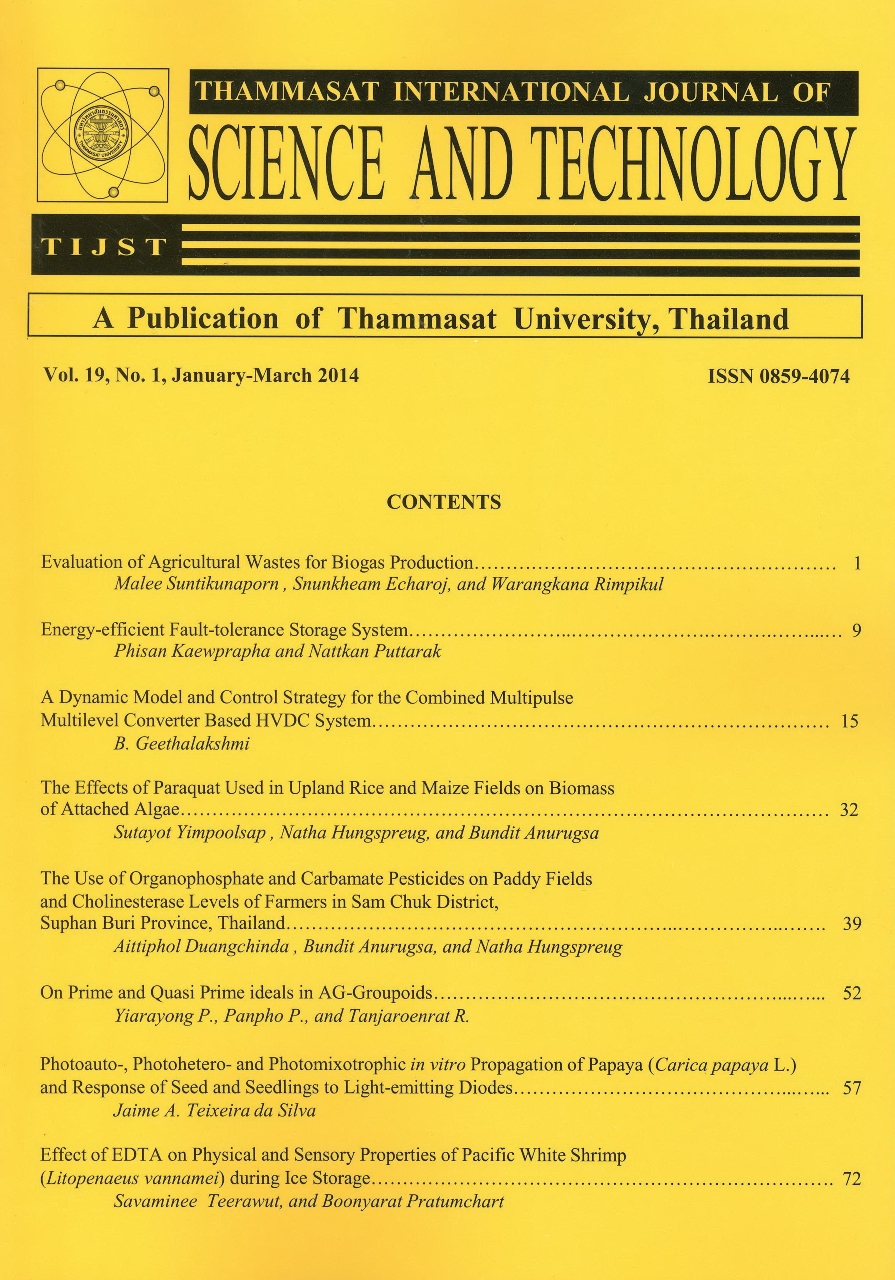Application and Process Development of Microwave Radiation for Etherification of Glycerol to Value-Added Polyglycerols
Main Article Content
Abstract
Glycerol is a cost-effective, renewable and environmentally friendly chemical building block, that can be converted into various valuable chemicals. Recently, the rapid increase in the amount of glycerol generated as by-product from the biodiesel production has significantly decreased the glycerol price. This study demonstrated the feasibility to scale up the etherification of glycerol to polyglycerols using microwave radiation, from a small laboratory microwave reactor to a larger scale (100X) in an inexpensive commercial microwave oven. A vacuum distillation was used to improve the purity of the desired polyglycerols to a commercial grade. In this developed process, glycerol was the only reactant without solvent, and microwave radiation was utilized as a heat source. The microwave radiation allows an efficient heating of the large-scale reactions in a shorter period of time, which has a tremendous impact on the cost of the process. The scale up development was done at 1 kg scale, 230 °C, 1000 W, 1.5 h, and with 3 wt% of Na2CO3 as a catalyst. The conversion, the combined yield (diglycerols, triglycerols, and tetraglycerols), the selectivity toward pentaglycerols, and the selectivity toward cyclic diglycerols are 84, 71, 11, and 4 percent, respectively. An increase in reaction time and temperature resulted in the formation of undesirable cyclic diglycerols and bigger polyglycerols. Furthermore, after vacuum distillation at 200 °C, the unreacted glycerol and cyclic diglycerols were efficiently removed. The compositions of the desired polyglycerols were vastly improved to nearly 100%. HPLC, 1H-NMR, 13C–NMR, and mass spectrometry were used to quantitatively and qualitatively analyze the polyglycerol products.
Article Details
How to Cite
Boonyarattanakalin, S., Bookong, P., & Ruchirawat, S. (2015). Application and Process Development of Microwave Radiation for Etherification of Glycerol to Value-Added Polyglycerols. Science & Technology Asia, 20(2), 33–43. retrieved from https://ph02.tci-thaijo.org/index.php/SciTechAsia/article/view/35781
Section
Engineering


